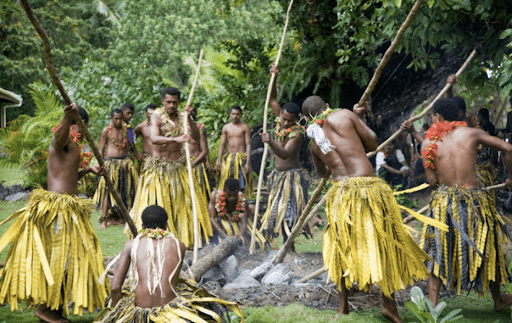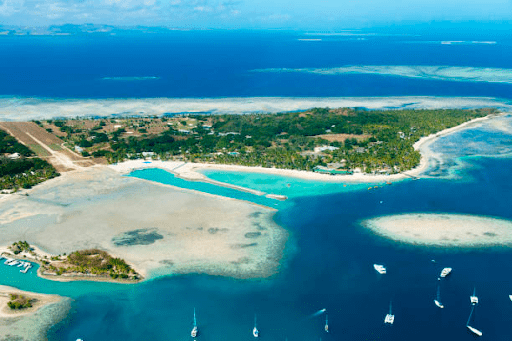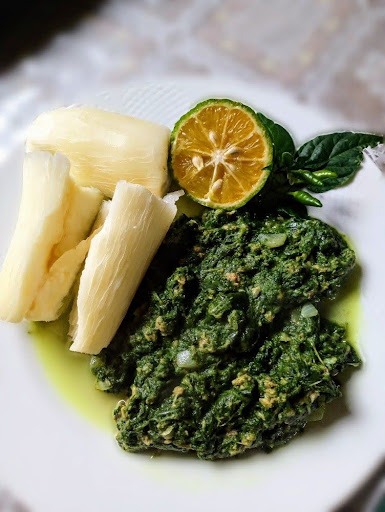The art of firewalking in Fiji
Witnessing the sacred ritual of firewalking while on a Fiji holiday is truly a captivating experience. Off the coast of Viti Levu lies the village of Nakarovu in the highland of Beqa Island, best known for their unique ability to walk across an aligned arrangement of hot stones, seemingly without burning their feet. Native Fijian firewalking is referred to as ‘vilavilairevo’ which means, ‘jumping into the oven’.
The tale of firewalking dates back to 500 years ago, a young man called Tuinaiviqalita, went in search of an eel to bestow as a gift to an elder he was proposing to seek favor from. Amidst capturing the eel, he realized that he had instead captured one of Fiji’s elusive small people, a spirit god wrapped in tapa cloth. The small man offered numerous rewards in exchange for his freedom but to no avail. However, when he offered the distinctive ability of firewalking to Tuinaiviqalita and his descendants, Tuinaiviqalita willingly granted his freedom.
As of today, the art of firewalking gifted to Tuinaiviqalita has been continuously demonstrated by his bloodline, the Sawau tribe of Beqa. Not only do they perform in their village, but they also exhibit and perform this extraordinary gift at hotels and art centers to keep the embers of Fijian culture richly igniting to future generations.
Firewalking ceremony in Fiji
Although firewalking has been integrated into the Sawau tribe’s way of living, firewalking still requires a great deal of discipline and preparation since failure to do so, infuriates the spirits and results in severe burns. Only men are chosen as representatives. 10 days prior to the firewalking ceremony, the chosen men must abstain from sexual intercourse and are not permitted to consume coconuts. In addition, none of the participants’ wives should be pregnant upon the duration of preparation.
Performers must construct the fiery pit with a standard pit measurement consisting of a diameter of 12-15ft with a 3-4ft depth. Massive river stones are then collected to fill the pit. Eight hours before the ceremony, a large bonfire is ignited to heat the bed of stones until they are white.
When the firewalking ceremony commences, leaves are grazed across the pit to bless it before excess charcoal and ash is removed. The chosen men enter the arena chanting, at the signal of a ceremonial priest, usually a direct descendant. The direct descendants of the chief, Tui Qalita have been specifically anointed as ceremonial priests to oversee and instruct the ritual of firewalking in Beqa.
When each man has made it across, chanting becomes louder and they end the performance with a sacrifice of their fern anklets being thrown into the pit. Days later, the anklets are recovered, grounded and blended into a tonic mixture that is consumed by the firewalkers to complete the sacred ritual.
Where to experience firewalking ceremony in Fiji?
Fijian firewalking ceremony is not just an ancient ritual for some islanders, but a test of discipline, strength and one’s complete trust and confidence in tradition and culture. Ideally, Beqa is where one would visit to witness the event, however, descendants of Tuinaiviqalita travel and perform at major hotels and resorts as the ceremony is a combination of firewalking, singing and dancing which is truly a splendid experience making one’s visit to Fiji, memorable.
Fiji firewalking ceremony resorts
Check out these resorts to experience the wonders of firewalking in Fiji:
Beqa : Beqa Lagoon Resort
Pacific Harbour : The Arts Village
The Pearl Resort and Spa
Coral Coast : The Outrigger Resort and Spa
The Warwick Resort
Shangri-La’s Fijian Resort
Denarau : The Westin
Hindu firewalking in Fiji
Aside from the Sawau tribe, firewalking is also a tradition of the Hindus in Fiji. In the month of July or August, Hindu firewalking is performed simultaneously with the rise of a full moon. The religious ceremony is performed in numerous temples around Fiji, usually the Mariamman Temple. Only the descendants of southern Indians perform the religious ritual which lasts for 10 consecutive days. The ritual is a test of faith and discipline to assist an individual to attain balance in all aspects of life, achieve an optimistic mindset and maximum potential.
Similar to vilavilairevo, Hindu firewalking also takes a great deal of preparation and discipline. Preparations last for a span of 3-10 days and are overseen by a religious priest. 10 days prior to the religious ceremony, performers must meditate daily in the temple, to the mother goddess Maha Devi (also known as Durga) commencing at sunrise and ending late at night. Sexual intercourse and meat consumption by participants are strictly prohibited and they must survive on little to no food and sleep. A dress code consisting of red and yellow garments is mandatory as it symbolizes the cleansing of spiritual and physical impurity.
In addition, yellow turmeric is smeared on the face to signify prosperity and immunity to illness. On the day of the firewalking ceremony, performers bathe in the sea and have their tongue, cheeks and body pierced by the priests with a three-pronged skewer symbolizing incarnations of the Hindu deities. Participants can have anywhere from three piercings to a hundred on their body. A series of whips on the devotees’ bodies is administered before and after the ritual. South Indian firewalking requires the devotee to achieve a deliberate state of spiritual calmness and allocate maximum attention on the goddess so as to attain a low tolerance to pain.
The firewalkers dance with joyful excitement for about 2km back to the temple where an adorned statue of the goddess is positioned to watch and to bless the religious ceremony as it commences. The firepit is ignited the night prior and continuously burns until the firewalking ceremony begins. If the souls are pure and sanctified, the goddess will protect the devotees from burns. Unlike vilavilairevo, Hindu firewalking consists of walking on a bed of embers and coals rather than white ashy stones and participants repeat the walk for five times while the power drum, called the ‘damaru’ is played. Legend has it that when the damaru is played, spiritual energy is generated, this drum, according to their belief, is a sacred tool connecting heaven and earth and responsible for maintaining the rhythm of the world order.
Ideally, to witness Hindu firewalking in Fiji, one must visit one of the below listed temples around the months of July or August coinciding with the occurrence of a full moon.
Nadi : Sri Siva Subramaniya Swami Temple
Suva : Sri Raj Maha Mariamman Temple












